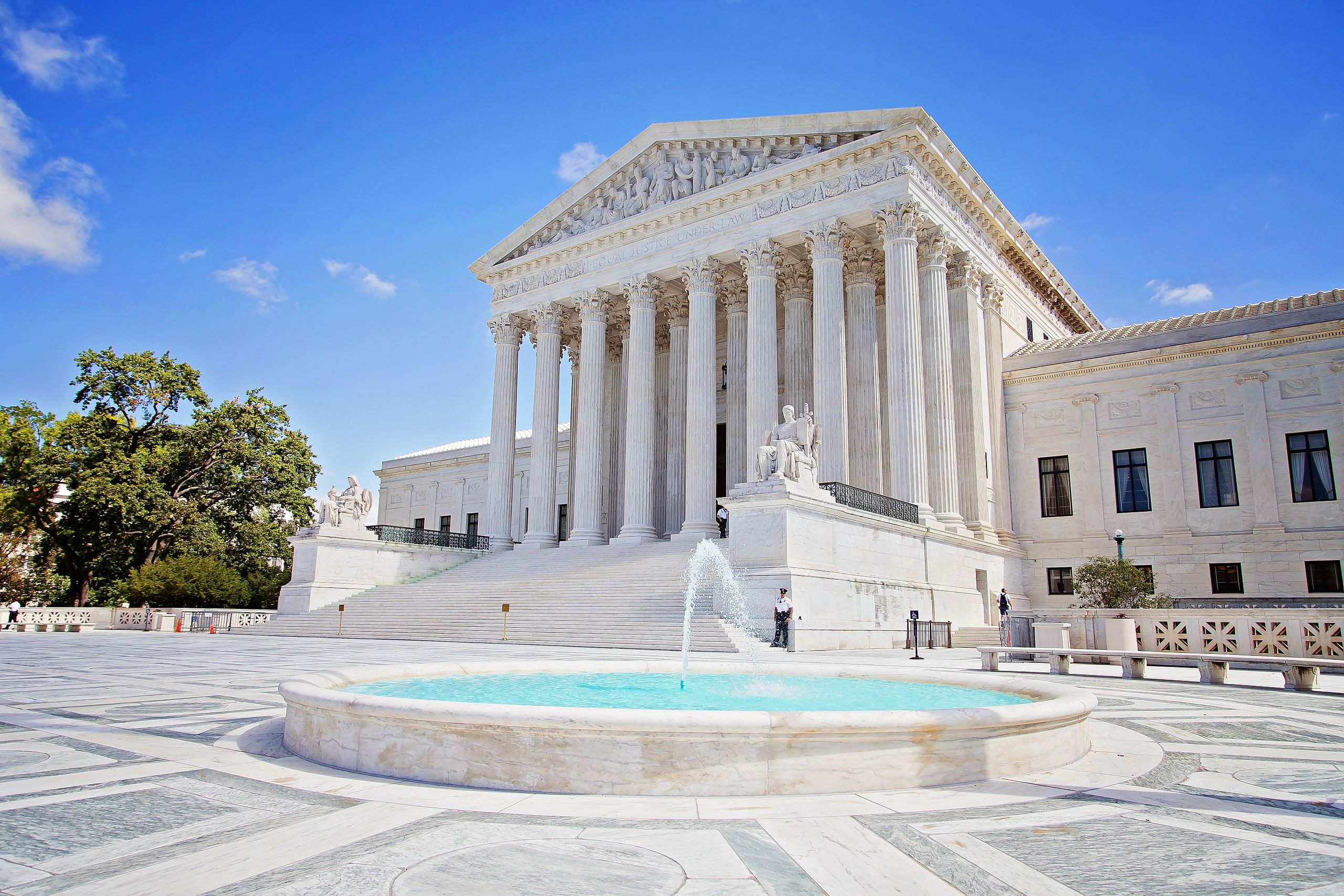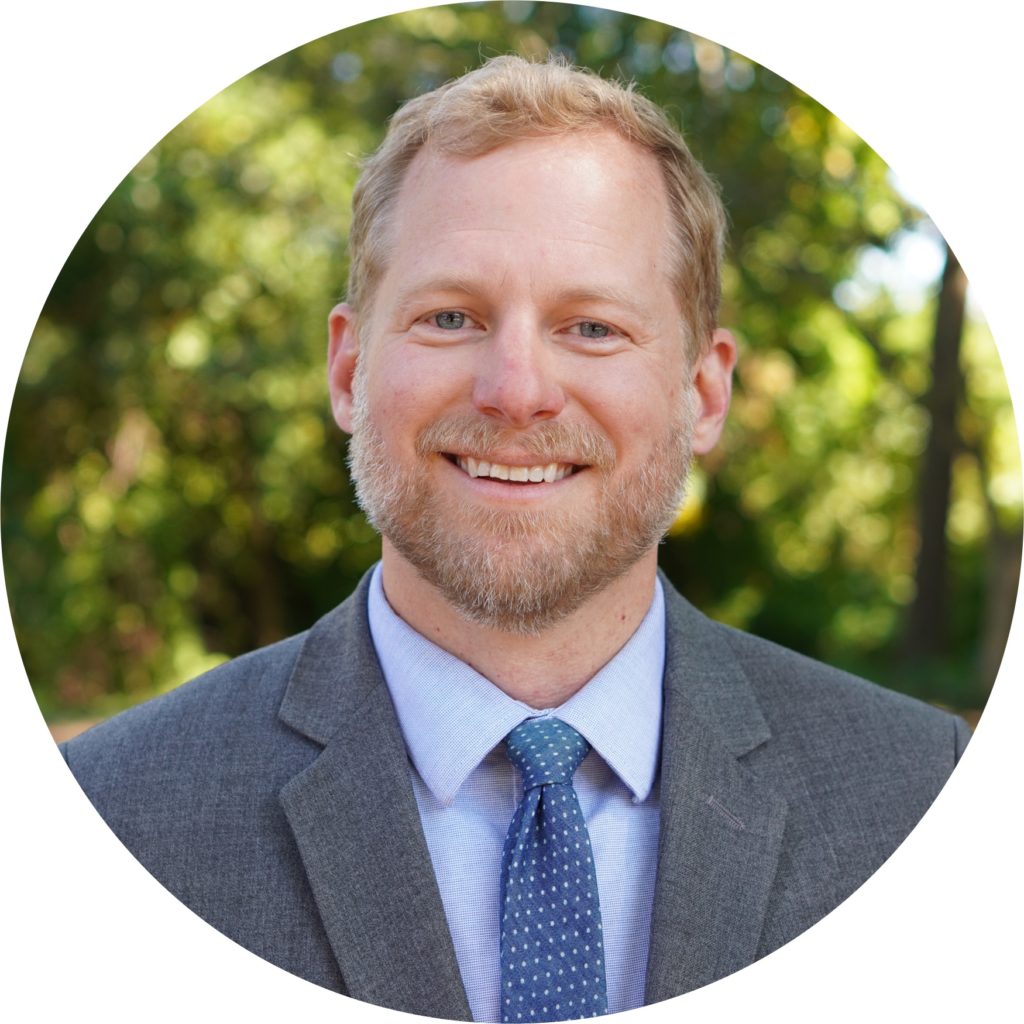
Shifting Alliances and the Lost Consensus: The Religious Freedom Restoration Act at Thirty
Kenneth Townsend
“Facade and fountain of the United States Supreme Court Building” by Sunira Moses (CC BY-SA 3.0 Deed).
This article is part of our “The Religious Freedom Restoration Act at Thirty” series. If you’d like to explore other articles in this series, click here.
Few Supreme Court opinions in recent generations have produced such swift and near-universal condemnation as Employment Division v. Smith (1990), a case in which the Court articulated a new standard for adjudicating religious free exercise claims under the First Amendment. Instead of requiring the government to outline a compelling interest to justify burdens on religious liberty, the new Smith standard only required that such burdens have some rational basis.
From the Southern Baptist Convention to the American Civil Liberties Union (ACLU), voices across the political spectrum decried the Court’s reversal of past precedents and mobilized to protect the fundamental right of religious free exercise. Congress proved receptive and passed the Religious Freedom Restoration Act (RFRA) in 1993 with a simple voice vote in the House and by a 97-3 margin in the Senate. The legislation’s explicit purpose was to “restore the compelling interest test set forth in [prior cases] and to guarantee its application in all cases where the free exercise of religions is substantially burdened.” Upon signing RFRA into law, President Clinton declared, “What [RFRA] basically says is that the Government should be held to a very high level of proof before it interferes with someone’s free exercise of religion…We believe strongly that we can never…be too vigilant in this work.”
RFRA’s honeymoon was short-lived, however. The Supreme Court significantly narrowed the reach of RFRA in City of Boerne v. Flores in 1997 by holding that Congress lacked the authority to impose onto states a standard for assessing religious free exercise claims. Congress responded by passing a second federal statute, the Religious Land Use and Institutionalized Persons Act (RLUIPA), which provided additional protections for prisoners and religious institutions facing land use restrictions. After RFRA’s narrowing and the passage of RLUIPA, religious liberty advocates began promoting state-based RFRAs to protect religious free exercise against burdens imposed by state, rather than federal, laws. As of summer 2023, twenty-one states have passed RFRAs, and ten additional states provide RFRA-like protections for religious free exercise.
Early state-based RFRAs encountered little opposition, but the cultural and political winds had shifted, rendering the previous religious liberty alliance fractured by the early 2010s. Rather than being a value that united right and left, religious liberty increasingly came to be identified with conservative causes and, consequently, viewed with growing skepticism by political progressives.
Thirty years ago, the ACLU, for example, was one of the most enthusiastic supporters of religious liberty. The ACLU authored one of only six amicus curiae, or “friend of the court,” briefs, in Smith, and was an outspoken proponent of the RFRA legislation. At the Judiciary Committee hearing for RFRA, the ACLU’s then-president Nadine Strossen declared, “The ACLU strongly supports [RFRA] because it restores religious liberty to its rightful place as a preferred value and a fundamental right within the American constitutional system.”
The original federal RFRA did indeed elevate religious liberty above many competing governmental objectives. This act declared religious free exercise an “unalienable right” that should only be burdened “in furtherance of a compelling governmental interest” and when the governmental burden represents “the least restrictive means of furthering that governmental interest.” The ACLU continued to take the side of religious liberty claimants in early RFRA cases that, for example, pitted religious free exercise against the government’s interests in things like land use policies and drug classifications. By the early 2010s, however, the ACLU had become one of the most vocal opponents of various state-based RFRAs, and in 2015 an ACLU representative wrote in the Washington Post that the organization “can no longer support [the federal RFRA] in its current form,” citing concerns that the law was too often “used as a sword to discriminate against women, gay, and transgender people.”
The contours of contemporary debates pitting religious liberty against social equality could hardly have been imagined in 1993. RFRA’s passage came only seven years after the Supreme Court upheld Georgia’s ban on same-sex intercourse in Bowers vs. Hardwick and at a time when gay marriage, same-sex adoption, and gender transition procedures were not priorities of progressive organizations—much less topics of regular discussion in mainstream political discourse. It might seem unimaginable given the developments of the intervening years, but the terms “LGBT” or “transgender” appear nowhere in RFRA’s legislative history, and anticipated conflicts between religious liberty and gay rights merited only scant discussion.
With the emergence of new countervailing demands from LGBT populations, however, religious liberty cases increasingly reflect, and sometimes exacerbate, social and political division. In recent years, the Supreme Court has addressed, among other things, the eligibility of religious student groups to receive recognition at public universities if they do not admit LGBT-affirming members, a religious foster care agency’s removal from a city’s approved list of providers because it discriminated on LGBT status, and whether a graphic designer can be required to design wedding websites for gay couples.
Some of the most contested recent religious free exercise cases in the lower courts have dealt specifically with transgender rights, including cases where religious hospitals and healthcare providers refuse to provide gender transition services on religious free exercise grounds. Should those interested in religious liberty and social equality concede the inevitability of conflict for the foreseeable future, or is there any way to reconceive religious free exercise to minimize the growing tension between religious liberty and social equality?
One way to approach these and other divisive cases is to reconceptualize religious liberty so as to harmonize it with other competing demands. The ACLU and other progressive organizations such as the Human Rights Campaign and Americans United for Separation of Church and State have lobbied in recent years for the passage of the Do No Harm Act, which, according to the ACLU, promises to restore RFRA’s “original intent as a protective shield for religious minorities” and would “preserve the law’s power to protect religious freedom, while clarifying that it cannot be used to harm others.”
This sort of harmonizing approach promises to make religious liberty more salient, or at least less threatening, for other political objectives. That said,there are textual, practical, and conceptual questions whether such an approach will succeed in restoring RFRA’s original intent or engendering the sort of widespread agreement that led to RFRA’s original passage.
While it is true that Smith concerned the free exercise of a religious minority—specifically a Native American man who lost his job and was denied unemployment benefits because he used otherwise unlawful hallucinogens in a religious ritual—there is nothing in the text or legislative history of RFRA that indicates the law only, or primarily, was meant to apply to religious minorities. It is therefore a stretch to suggest that the “original intent” of RFRA was limited to providing a “protective shield for religious minorities,” as important as that goal might be.
On a practical level, this harmonizing approach will inevitably fail to win over those who prioritize religious liberty on its own terms and not simply for its usefulness in accomplishing related, but nevertheless distinct, objectives such as protecting religious minorities. One of the most consequential potential impacts of the Do No Harm Act, which was first introduced in 2016, would be to make RFRA “inapplicable to laws” regarding the “provision of, or coverage for, any health care item or service.” Given recent and ongoing controversies surrounding religious exemptions in the context of abortion and transgender care, it is little surprise that this proposed narrowing of RFRA has faced opposition, including from religious minorities such as the Seventh-day Adventists who have been disproportionately represented in the nation’s religious liberty case law.
Beyond these practical, political concerns, there are even more foundational conceptual questions regarding the relationship between fundamental values such as religious liberty and social equality. As its title indicates, the Do No Harm Act aims for a religious liberty-social equality landscape that avoids harm. While rhetorically attractive, this aspiration is incompatible with a world where ultimate, fundamental goods come into conflict. Given the realities of pluralism and the current cultural landscape, there seems no way to avoid harm or even to reach agreement on what constitutes relevant harm. The Do No Harm Act is concerned, for example, with the potential harm experienced by transgender children whose gender transitions are delayed or denied. In contrast, the newly launched nonprofit Do No Harm is concerned with the potential harm to children who prematurely undergo gender transition. Others are concerned about the possible harm experienced by a medical provider or hospital required to perform services, such as gender transition procedures or abortions, that impose burdens on religious free exercise. To ignore the possibility—indeed the inevitability—of harm is to deny the reality of moral tragedy in pluralist societies.
In reflecting on the last thirty years, it is hard not to feel a sense of longing for what has been lost. The bipartisan consensus that led unexpected allies to join in common cause has frayed, and American politics feels as polarized as ever. There are no easy answers to the polarization and antagonism characterizing American culture—including in debates on social equality and religious liberty—but despair is not inevitable. The widespread differences reflected in these debates offer reminders of just how differently some of our fellow Americans feel about issues that might seem so simple to us. If approached with a measure of humility, this recognition of deep difference can remind us of the limits of our own knowledge and prompt us to imagine the experiences of others. Such an aspiration might feel pollyannaish, but democracy requires nothing less than a citizenry willing to countenance the hopes and fears of fellow citizens. ♦

Kenneth Townsend is the Executive Director of Leadership and Character in the Professional Schools, Teaching Professor in the Wake Forest School of Law, and a Presidential Higher Education Fellow. A recipient of the Truman Scholarship for Public Service and the Rhodes Scholarship, he earned a B.A. from Millsaps College, an M.Phil. from the University of Oxford, and a J.D. and M.A.R. from Yale University. His research focuses on the relationship between law and morality, leadership in the law, and the ethical formation of professionals.
Recommended Citation
Townsend, Kenneth. “Shifting Alliances and the Lost Consensus: The Religious Freedom Restoration Act at Thirty.” Canopy Forum, December 13, 2023. https://canopyforum.org/2023/12/13/shifting-alliances-and-the-lost-consensus-the-religious-freedom-restoration-act-at-thirty.

